
by Dorothy C. Lee | Apr 24, 2018
Grill Out Safely This Summer
Perhaps it’s the gentle climate with temperatures conducive to outdoor cooking for much of the year. Or it might be that an outdoor get-together with family, friends, and good food is a great way to celebrate the summer. Whatever the reasons, outdoor cookery is firmly established as a tradition in the South.
Outdoor cookery has given rise to many unique and flavor-filled recipes for foods that can be prepared on even the simplest grill. If long days of summer have you longing to fire up the grill, the following tips, delicious recipes, and helpful grilling charts will help make your outdoor cooking experience easy, safe, and rewarding.

Grilling
Photo Credit: Dorothy Lee
Safety is an important consideration when operating a grill. Improper use can cause a fire or explosion. Keep the area around a lighted grill clear of combustible materials, and never use a grill in an enclosed area such as a sheltered patio or a garage. Avoid wearing loose-fitting clothing that may catch fire. The cooking grids should be cleaned after every cookout. The last thing you want to do is cause someone to become ill due to improper cleaning or unsafe food preparation practices.
Wash your hands with hot soapy water for at least 20 seconds before starting to prepare any foods and wash your hands again if you do anything else—change a diaper, pet an animal, or blow your nose, for example. Cover any cuts or sores on your hands with a bandage or use plastic gloves. If you sneeze or cough while preparing foods, cover your mouth and nose with a tissue and turn your face away, or cough into your sleeve. Always wash your hands afterwards.
Bacteria multiply rapidly at room temperature. Most food-borne illness-causing bacteria cannot grow well at temperatures below 40°F or above 140°F. Thaw foods in the refrigerator or in the microwave. Never leave foods out at room temperature.
Keep everything that touches food clean. Bacteria can hitch rides around your kitchen on all sorts of things—plates and cutting boards, dirty utensils, dish rags and sponges, unwashed hands.
Never chop fresh vegetables or salad ingredients on a cutting board that was used for raw meat without properly cleaning it first. If possible, keep a separate cutting board just for the preparation of raw meat, poultry, and fish.
Wash cutting boards thoroughly with hot soapy water, and then sanitize with a solution of household bleach and water.
The most popular meat for outdoor grilling is beef, particularly ground beef. If ground beef burgers are to be the feature of your next cookout select freshly ground meat that has fat content of about 15%. Form the meat into loose patties. Cook hamburger patties to an internal temperature of 160°F.
Keep raw meat, poultry, fish, and their juices from coming into contact with other foods during preparation, especially foods that will not be cooked. Wash all utensils and your hands with hot soapy water after contact with raw meat.
Marinate meat, poultry and seafood in the refrigerator in a covered, non-metal container. Throw away any leftover marinade.
Grill food to a safe internal temperature. Use a meat thermometer to assure correct doneness of the food being grilled.
Safe minimum internal temperatures:
- Poultry (whole, ground, and breasts): 165°F
- Hamburgers, beef: 160°F
- Beef, veal, and lamb (steaks, roasts & chops):
- Medium rare: 145°F
- Medium: 160°F.
Hold meat at 140°F until served. Use a clean platter for transferring cooked meat from grill to serving table.
Summer is the time for getting together with friends and family and cooking outdoors. Make your outdoor grilling experience safe and enjoyable.
Safe Food Handling Fact Sheet, USDA, Food Safety and Inspection Series, https://www.foodsafety.gov/
When we think of foods to prepare outdoors we almost immediately think meat. However, grilled vegetables and grilled fruits make a delicious accompaniment to grilled meats.
Corn on the Cob Kabob
- 2 medium red onions, cut into 8 wedges each
- 4 fresh ears sweet corn, husked, silks removed, and cut crosswise into 4 pieces each
- Nonstick cooking spray
- ¼ cup butter, melted
- ¼ teaspoon garlic powder
- ¼ teaspoon onion powder
- ¼ teaspoon dried oregano, crushed
On each of eight 12-inch wooden skewers, alternately thread 2 onion wedges and 2 pieces of corn, leaving about ¼ inch between each vegetable. Lightly coat vegetables with nonstick spray.
For a charcoal grill, grill kabobs on the rack of an uncovered grill directly over medium coals for 15 to 18 minutes or until vegetables are tender and brown, turning occasionally to brown evenly. (For a gas grill, preheat grill. Reduce heat to medium. Place kabobs on grill rack over heat. Cover, grill as above.)
In a small bowl, combine butter, garlic powder, onion powder and oregano. Brush over vegetables. Makes 4 servings.
Cinnamon-Grilled Peaches
- 4 large ripe freestone peaches
- Eight 3-inch cinnamon sticks
- 8 fresh mint leaves
- 4 tablespoons unsalted butter
- ¼ cup firmly packed brown sugar
- ¼ cup dark rum
- ½ teaspoon ground cinnamon
- Pinch salt
- Peach or vanilla ice cream, for serving
Rinse the peaches and blot them dry with paper towels. Cut each peach in half and discard the pit. Then, cut each peach into quarters. Using a pointed chopstick or metal skewer, make a starter hole in the center of each peach quarter, working from the pit side to the skin side. Skewer 2 peach quarters on each cinnamon stick, placing a mint left between the 2 quarters.
Combine the butter, brown sugar, rum, cinnamon, and salt in a saucepan and bring to a boil over high heat. Let the glaze boil until thick and syrupy, about 5 minutes.
Prepare and preheat the grill to high. Brush and oil the grate. Next, place the skewered peaches on the hot grate and grill until nicely browned, 3 to 4 minutes per side, basting with the rum and butter glaze. Spoon any remaining glaze over the grilled peaches and serve at once. Peach or vanilla ice cream make a great accompaniment.
by Dorothy C. Lee | Oct 26, 2017
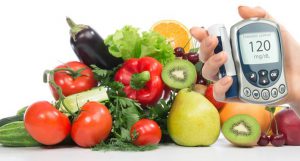 Some 30 million Americans have been diagnosed with diabetes this year. How will their lives be affected? Diabetes does mean some big changes but you may be surprised how much diet flexibility remains.
Some 30 million Americans have been diagnosed with diabetes this year. How will their lives be affected? Diabetes does mean some big changes but you may be surprised how much diet flexibility remains.
The human body is a marvelous machine, made up of many complex systems. When everything runs smoothly, we are “healthy”. Diabetes is an example of what happens when things don’t work exactly as they should. People with diabetes cannot properly use glucose, also called blood sugar, the cells energy source. Some people make no insulin, which regulates blood glucose by helping it enter the cells. Other people produce too little insulin, or have trouble using the insulin they make, or both.
The exact cause of diabetes is unknown, but if you have a family history of diabetes, you are at great risk. The ADA estimates that almost half of all people with diabetes don’t know they have the disease. Some people ignore their symptoms until they have medical complications.
Some of the warning signs of diabetes may be symptoms of excessive thirst, unusual hunger, slow healing of infections, constant urination, blurred vision, weakness and fatigue. Recurring of these symptoms may signal the need to consult your physician.
A diagnosis of diabetes doesn’t’ have to mean dietary deprivation and boredom. The key dietary words are; low-fat, high-fiber, low-sodium, well-balanced and reduced sugar.
Exercise is another important factor in diabetes management for two reason. Active people have an easier time losing weight which is important for controlling glucose levels. Exercise also promotes the cells ability to use glucose, which in turn reduces the amount of glucose in the body to more favorable levels.
Stress reduction is an important part of a wellness program. Feeling stressed out, uptight, and edgy strains the entire body. We may not have control over the sources of stress in our life; therefore, change the way you react to life’s stressors. Physical exercise is one of the best stress reducers. Don’t take on more than you can handle. Use support systems, reach out to family and friends.
Diabetes affects many people and can have very serious consequences, but the good news is that your health habits can help prevent diabetes or reduce its impact on your health. A healthy lifestyle can help reduce the risks of disease that are often a complication of diabetes.
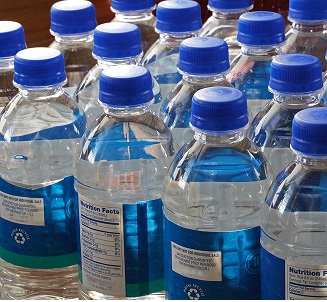
by Dorothy C. Lee | Jun 27, 2017
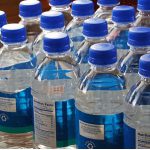
Carry water with you to sip throughout the day
Summer has arrived! During the summer months, especially along the Gulf Coast, it is hot and humid. Keeping the body hydrated is important to maintaining good health.
As the temperature rises in the summer and the body loses more water through evaporation and perspiration, it makes good sense to increase your intake of fluids. Keep in mind that by the time you notice you are thirsty, you have already depleted your water stores dramatically. A good rule of thumb is to drink a few ounces of water every fifteen to thirty minutes when you are working or playing hard in the heat.
- Myth or Fact – You should drink at least eight glasses of water a day.
Myth – On average, the body requires a half gallon of water daily. That’s the amount required to replace what has been lost through perspiration, evaporation, and body waste. Milk, juice, and other fluids can be added to your daily total. Beverages that contain caffeine, such as coffee, tea, and soft drinks, are not good substitutes for water. Caffeine actually may cause the body to lose water. The same is true for alcoholic beverages. They contribute to water loss, not gain, because alcohol acts as a diuretic.
- Myth or Fact – All water is the same.
Myth – The following guide will help you navigate the sea of choices available:
- Distilled Water – is pure water with no added chemicals or minerals.
- Mineral Water – is available in canned or bottled varieties. Many brands include a mix of minerals to improve the taste. Natural or artificial flavors, such as lime or lemon, may be added to some. Some varieties add sugar. Check the label.
- Soft Water– commercially softened water often is treated with salt and tends to be high in sodium.
- Sparkling Water– some sparkling waters contain bubbles naturally; others are created with the addition of carbon dioxide.
- Well Water – is more commonly known as tap water.
- Myth or Fact – Increasing daily water and fluid intake is difficult.
Myth – Actually, there are a variety of ways to increase water and other fluid intake. Purchase a insulated water bottle and refill it throughout the day. Add flavor to water. Infused water is becoming a popular food trend. Infuse with strawberries, lemons, limes, or other flavorful fruits and vegetables. Choose foods that contain high levels of water content – for example, watermelon, grapes, and kiwi. Start the day with a glass of water at breakfast.
- Myth or Fact – Water aids in bodily functions.
Fact – Water contributes about sixty percent of an adult’s body weight. Staying hydrated may be a major benefit to increasing energy production. Increased water consumption can aid in weight loss. Water aids in the body’s temperature regulation, acts as a lubricant, and cushions around joints. Water serves as a solvent for minerals, vitamins, amino acids, and glucose. Because water is vital to bodily functions, the body directs many of its activities toward maintaining balance.
- Myth or Fact – You can drink too much water.
Fact – Over-hydration can result in water intoxication. Water intoxication occurs when you consume more water than the kidneys can excrete. Consuming large amounts of water in a short period of time can result in intoxication. Remember, you should drink at least eight glasses of water a day – it’s a fact.
Reference: https://authoritynutrition.com/7-health-benefits-of-water/
by Dorothy C. Lee | Jun 11, 2017
June is National Dairy Month. National Dairy month was first celebrated in 1937 to encourage Americans to drink more milk.
Milk and dairy products comprise a diverse group of foods from fluid milks, fermented milk products, and over 500 cheeses.
Generations of American children have grown up hearing the same parental advice, “Drink your milk…..milk builds strong bones and teeth.”
Milk has long been associated with good health, making it one of the heathiest beverages consumed in the United States. Current Dietary Guidelines recommend daily consumption of dairy for greatest impact. The body requires essential nutrients to maintain optimal health. Milk and dairy products are rich in many of these nutrients. Milk and dairy products contain calcium, vitamins A, D, B12, and high quality protein. The body absorbs calcium with the aid of vitamin D, both of which are found in fluid dairy products. Milk, whole, low fat, and skim, are homogenized and vitamin D fortified.
The amount of consumption from the dairy food group depends on age. Generally one cup of milk, yogurt, or one and a half ounces of cheese is considered a serving from the dairy group.
The cost of milk and dairy products varies. Careful selection can result in substantial savings. Milk generally is less expensive as a source of calcium than other dairy products.
Effective shopping skills depend on understanding and using information on the label including nutrition facts, product date, contents and ingredient statements. Usually larger containers, such as half gallon to a gallon cost less than single quarts. Compare the cost of the number of servings.
Milk and dairy products are highly perishable, so careful handling and storage to prevent spoilage, preserve flavor and retain nutritional uniformity is needed.
Florida regulations call for uniform standards for dating milk and requires all dairy processors to label milk and dairy product containers with the last date the product can be offered for sale. The date on the container does not mean that the milk will be spoiled on that date; it indicates that the milk should not be sold beyond that date. This is to insure a reasonable shelf life in your refrigerator after it is purchased. The quality and flavor are still dependent upon careful handling and storage. Remember, milk and dairy products are highly perishable and should be kept cold.
In recent years many kinds of alterative milk products have appeared in the market place. In choosing a dairy milk or dairy alternative you should be aware of the different alternative milk products available and what makes them different. With so many kinds of milk and milk alternatives on the market, reading the labels on containers to recognize differences in the contents is well worth while. Here is information on some of the more popular forms of milk alternatives now available and an explanation of some special terms you may find on labels and facts that may help in buying.
-
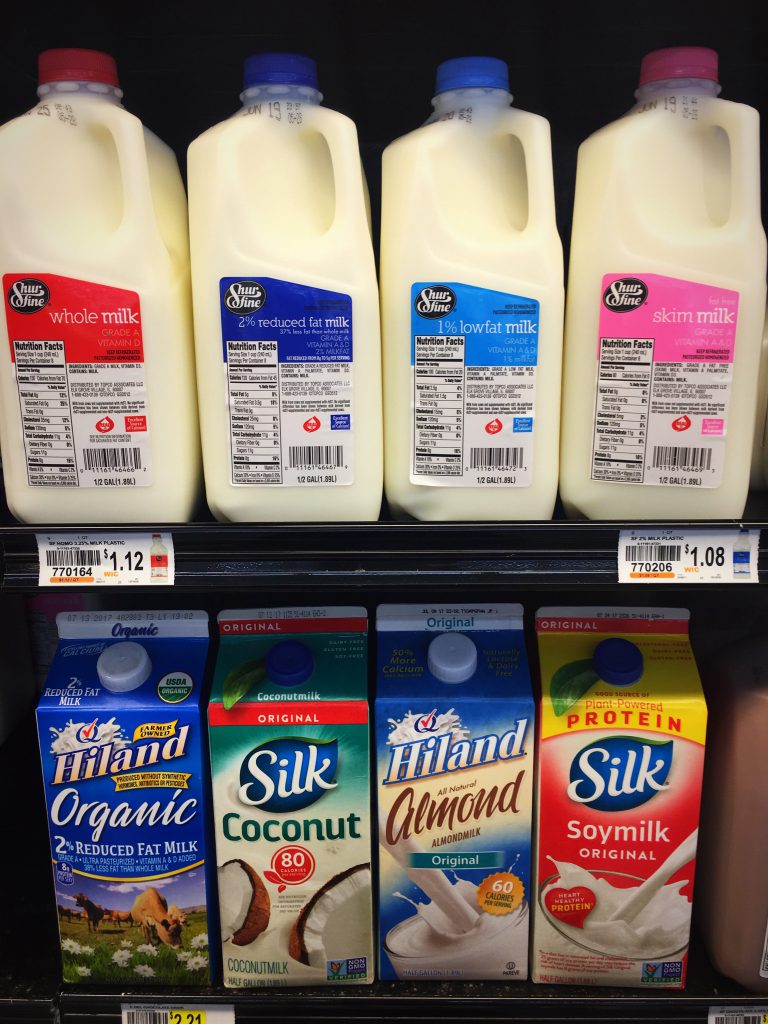
Variety of milks Picture by Wendy Meredith
Almond
- Low-fat
- 40 calories
- 1 gram protein
- Low in protein or calcium content. Nutty flavor.
- Coconut
- 420 calories per cup
- 3 grams protein
- 45 grams fat
- High in fat content.
- Hemp
- Made from hemp seeds
- Contains 10 essential amino acids
- 80-140 calories per cup
- 3 grams protein
- Grassy flavor. Tends to separate when added to hot beverages.
- Rice
- 130 calories per cup
- 1 gram protein
- 2 grams fat
- Low in fat and protein content. Higher in carbohydrates.
- Soy
- 110 -130 calories per cup
- 7-11 grams protein
- 4 grams fat
- Higher in protein content. Thick texture often taste.
There are many ways to add milk into meals. Many people find milk refreshing and never tire of drinking it plain. However, cooked foods and other prepared foods offer many additional ways to add more milk into daily food, always with much added nutritive value and often extra dividends in flavor. Use milk instead of water when preparing cooking cereal, or add milk when preparing soups, mashed potatoes, custards sauces and other cooked foods. Beverages made with milk or milk products fit into meals and snacks and add extra nutritive values to daily fluid intake.
June is National Dairy Month, but milk is needed for good health every day of the year.
References;
https://www.ams.usda.gov/about-ams/programs-offices/dairy-program
https://www.choosemyplate.gov/
https://health.gov/DietaryGuidelines/
For further information, contact:
Dorothy C. Lee, C.F.C.S.
UF/IFAS Extension Escambia County
3740 Stefani Road
Cantonment, FL 32533-7792
(850) 475-5230
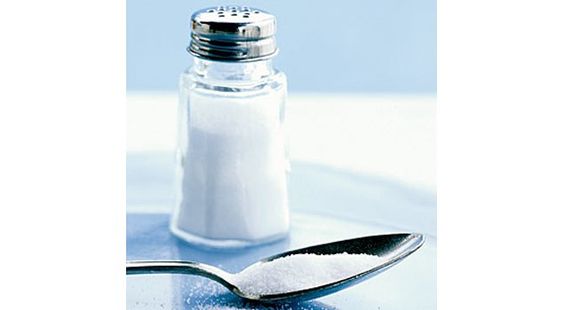
by Dorothy C. Lee | Mar 13, 2017
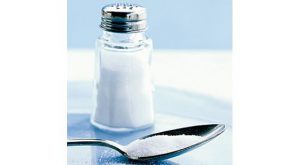 March 10 – 16, 2017 is National Salt Awareness Week. Salt is the main source of sodium in the American diet. Sodium is a mineral only needed by the body in small amounts. It is found in foods, mostly as sodium chloride.
March 10 – 16, 2017 is National Salt Awareness Week. Salt is the main source of sodium in the American diet. Sodium is a mineral only needed by the body in small amounts. It is found in foods, mostly as sodium chloride.
Sodium has an important role in maintaining good health, however, over-consumption of sodium may lead to chronic diseases. According to the American Heart Association, Americans consume more than twice the recommended daily amount. The US Dietary Guidelines recommended amount is 1,500 milligrams a day. Most Americans consume 3,400 milligrams a day.
Sodium occurs naturally in some foods, but most of the sodium in the American diet comes from processed foods, restaurant meals, and as seasonings. Table salt is composed of sodium and chloride elements. One teaspoon of salt contains 2,000 milligrams (mg) of sodium.
For a healthful diet, it is important to eat a variety of foods. Choose a varied diet that has only a moderate amount of sodium.
When shopping, read the labels on food items. Select the foods with the lowest levels of sodium. To cut down on sodium in your diet, use these foods less often:
- Canned and processed convenience foods
- Salty snacks and crackers
- Processed cheeses
- Salted, smoked, or cured meats
- Pickled or canned fish
- Canned soups and meats
- Pickles, sauerkraut, relishes
- Ingredients used in home baking and cooking (baking powder, soda, and MSG)
Another way to cut down on sodium is by using less salt in cooking. Use herbs and spices for seasoning instead of salt. Flavor is a very important component in the enjoyment of food. A famous gourmet once said, “Flavor is the soul of food; and herbs, seasonings and spices are the soul of flavor.” Remove your saltshaker and replace it with an herb shaker. A healthy alternative seasoning to sodium, herbs and spices add zest and flavor to food.
When dining out, select broiled poultry, fish, or other broiled or grilled meat entrees. Request foods be prepared without salty seasonings. Order green salads with oil and vinegar dressing or ask for the dressing to be served on the side.
Varieties of salt substitutes are available in the spice section at your grocery store. Potassium chloride is the major component of these products. Check with your doctor before using salt substitutes.
Try these recipes and see how tasty foods low in salt can be:
All-Around Mix
2 teaspoons garlic powder
2 teaspoons onion powder
2 teaspoons paprika
2 teaspoons white pepper
2 teaspoons dry mustard
1 teaspoon ground celery seeds
Use to season salads, meats, poultry, or vegetables.
Shake and Make
2/3 cup nonfat dry milk powder
½-teaspoon pepper
½-teaspoon dry mustard
2 teaspoons low-sodium chicken-flavored bouillon granules
½-teaspoon poultry seasoning
Use as a crispy coating for fish, poultry, or meats. Cook according to recipe. About 2/3 cup is enough for one chicken or several fish fillets.
References
Mankato Health Program Foundation Inc., Mankato MN
American Heart Association, heart.org
For further information, contact:
Dorothy C. Lee, C.F.C.S.
UF/IFAS Extension Escambia County
3740 Stefani Road
Cantonment, FL 32533-7792
(850) 475-5230
dclee@ufl.edu








